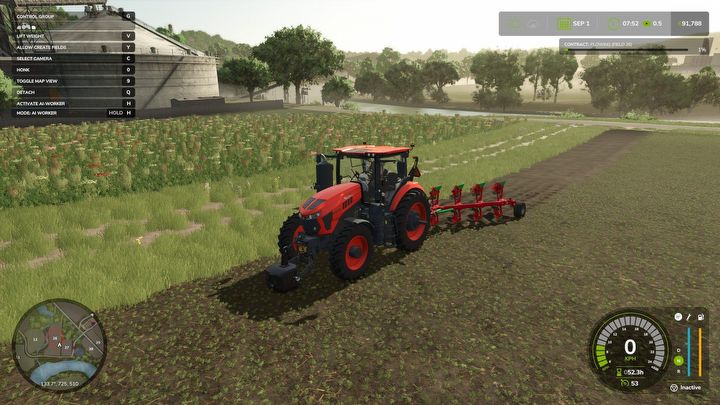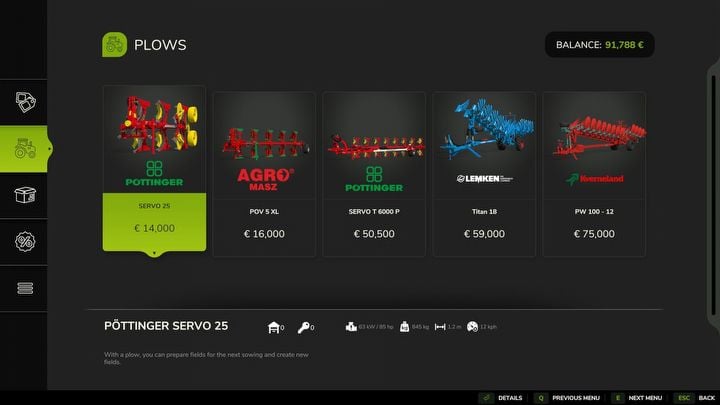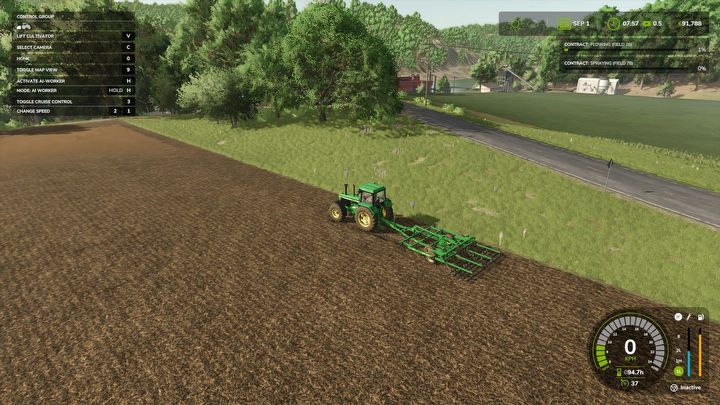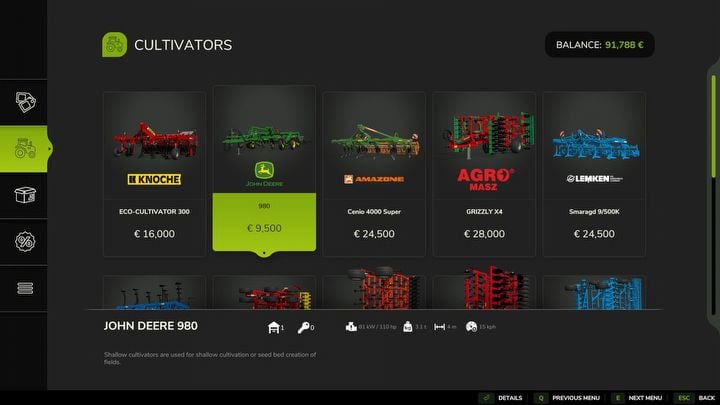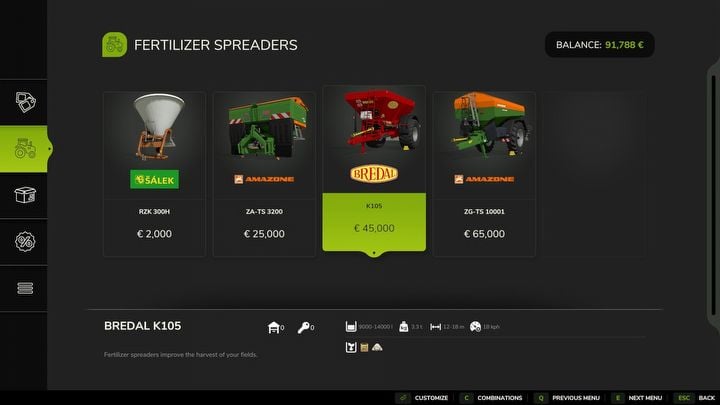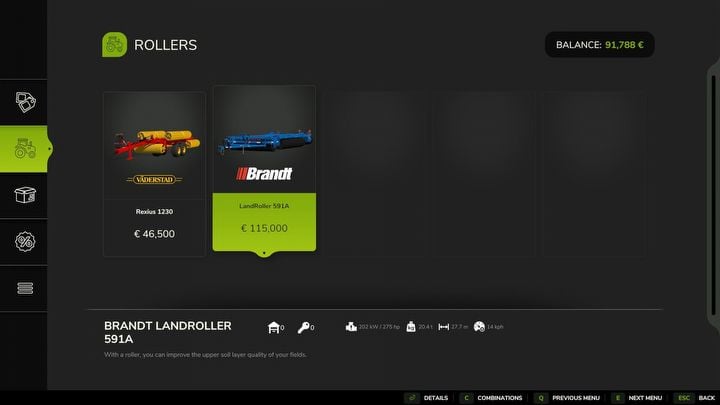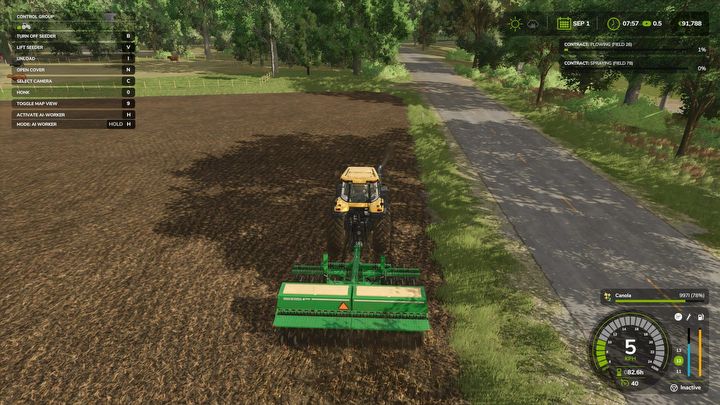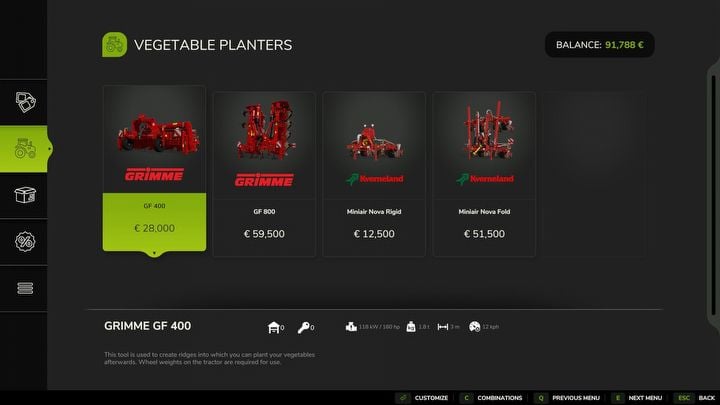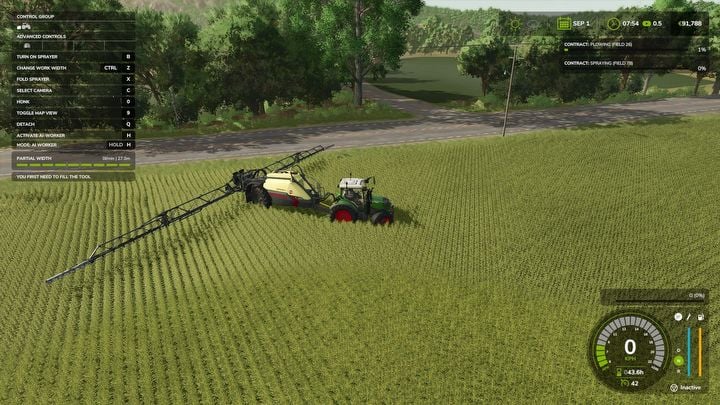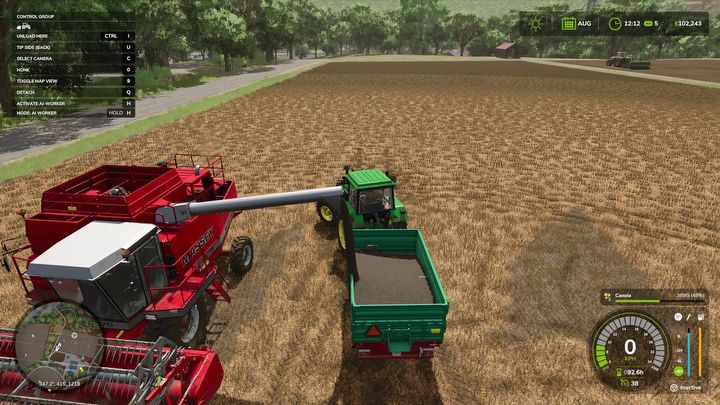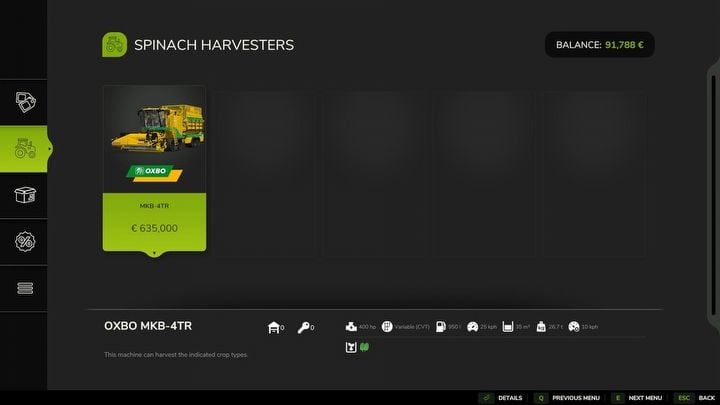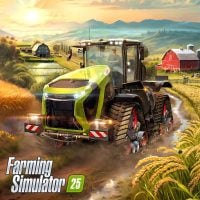Farming Simulator 25: Order of field work
Performing work in the fields is one of the basic activities in Farming Simulator 25. On this page of the guide, we will explain to you when and in what order to perform each activity.
Last update:
On this page of the guide, you will find a detailed summary of all work performed in the field. We explain what activities to perform in a specific order, what tools and machines you will need for your work, and what benefits result from specific activities. With our help, complex terminology will no longer be a mystery to you.
- Plowing
- Cultivation
- Lime spreading
- Stone picking and soil rolling
- Sowing and planting
- Weeding
- Fertilizing
- Harvesting
- Mulching
Plowing
- Plowing is the process of turning over the top layer of soil. In the case of many plants (such as cereals) this is an optional process, but potatoes or corn, for example, will require it. This is also the first activity that should be performed on a new field.
- It prevents the weeds growing on your field. If you have enabled the appropriate option in the game settings, you will need to periodically plow fields to maintain satisfactory yields.
- Ploughing digs out stones out of the soil, which you can get rid of through the stone picking process (described below).
- This is one of the slowest jobs done in the field. It also requires a fairly efficient and powerful tractor.
- For plowing, you need plows, subsoilers and spaders.
- Plows enable deep plowing. They also allow for combining and creating completely new fields after activating the appropriate function (Y key on the keyboard).
- Subsoilers perform shallower plowing, which is much faster than that performed with a plow. You can also attach extra modules (e.g. seeder) to perform several tasks during one pass. However, subsoilers do not allow for creating new fields, while shallow plowing digs out more stones.
Cultivation
- A basic activity performed in the field. The loosened soil is prepared for the seeds.
- It is much faster than plowing and fully sufficient for most plants.
- You do not need to cultivate the field if you have previously plowed it.
- In the cultivation process we use cultivators or harrows.
- Standard cultivators are generally slower and have a smaller width. They do remove weeds quite well though. Shallow cultivators penetrate the ground less, which allows for faster work and a larger working width. However, they are much more expensive and do a poor job with weeds.
- Harrows are usually much faster than cultivators and can work with smaller tractors.
- When choosing a cultivation tool, thoroughly examine its properties, and also check if it can be combined with an additional module, for example a seeder.
Some seeders can be used for cultivation.
Lime spreading
- Lime spreading is an activity performed cyclically. It helps in maintaining the proper acidity of the soil. You will receive relevant information about the need for lime spreading in the table when standing in the field (lower left corner of the screen).
- If you do not do lime spreading, your crops will be 15% worse.
- To perform lime spreading, you need a compatible fertilizer spreader. When purchasing a spreader in a store, look for one with a lime icon.
- You can buy lime on pallets in the store or at liming stations.
Stone picking and soil rolling
- Stone picking involves removing stones from the field that have formed after plowing or cultivation.
- Stones do not affect the quality of crops, but their presence in the field increases equipment wear.
- You need a stone picker to collect stones.
- You can sell the collected stones at a stone crusher point.
- While soil rolling, small stones are pressed into the soil. This is an optional step performed immediately after sowing.
- Soil rolling increases crops.
- Soil rolling freshly cut grass in the field will make it as if it had been fertilized.
- This activity requires rollers. This machine works quite fast and covers a significant area of the field in one pass.
Sowing and planting
- After loosening the soil, it's time for sowing or planting.
- You can buy suitable seeds on pallets in stores or in silos. Before heading out to the field, check if you have filled the machine with the appropriate amount of seeds.
- Once in the field, select the appropriate crop (Y key), then turn on and lower the machine. If you are playing with the seasonal calendar enabled, remember to only sow plants that are currently in season.
- Before harvesting, you can't plow or cultivate the field. This will lead to the destruction of planted crops. However, you can perform soil rolling to increase the yield.
- Seeders are used for sowing cereals or rapeseed.
- Plants such as sugar beets, corn or soybeans require special precision seeders.
- Planting most vegetables (carrots, parsley, radishes) require a planter.
- Some plants, such as potatoes, require special planters designed especially for them.
- Some seeders and planters also function as cultivators and/or fertilizer spreaders.
- More expensive machines also allow direct sowing, which allows you to bypass the soil loosening process. However, using them increases the chance of weeds appearing.
Weeding
- The presence of weeds negatively affects the quality of crops and yields.
- Weeding can be done using a weeder or spraying herbicides.
- Weeders remove weeds mechanically. They should be used at an early stage of plant growth.
- Herbicides are weedkilling agents distributed with sprayers. They can eliminate even the bigger weeds. Chemical substances can be purchased in the store.
Although herbicides are more effective in removing weeds than mechanical methods, time should still be taken into consideration. If you leave a weed-infested field for too long, some unwanted plants may survive.
Fertilizing
- Fertilizing is another optional, but very profitable process.
- A single fertilization increases yields by 23%. A field can be sprayed twice, which will accumulate the yield bonus. By using natural fertilizers, you can perform double fertilization at once.
- Fertilizers come in solid form (manure, artificial fertilizer) and liquid form (slurry, compost, chemical spray).
- When breeding animals, you can produce your own fertilizer.
- Manure spreaders and fertilizer spreaders are used for solid fertilizers. Fluid manure can be sprayed with sprayers and sanitation trucks.
Harvesting
- Harvesting is done using harvesters after the plants have grown in the field.
- Harvesting in the rain can lead to a reduction in yields! Avoid this.
- Cereals generate straw, which can then be harvested.
- You can empty the full harvester using a pipe, pouring the crops onto a trailer.
- For harvesting most plants, a standard harvester will be enough for you. You will only change headers, i.e. elements attached to the front that are responsible for harvesting specific crops.
- Special harvesters are necessary for some types of crops, such as potatoes, beets, spinach, beans, peas and rice.
Mulching
- Mulching is performed after harvesting. This process involves crushing the plant residues that remain after harvesting (chaff). It is quite a fast process.
- Mulching is optional, but it increases subsequent yields by an additional few percent.
- Mulching is done with special mulchers.
You are not permitted to copy any image, text or info from this page. This site is not associated with and/or endorsed by the GIANTS Software or GIANTS Software. All logos and images are copyrighted by their respective owners.
Copyright © 2000 - 2025 Webedia Polska SA for gamepressure.com, unofficial game guides, walkthroughs, secrets, game tips, maps & strategies for top games.
